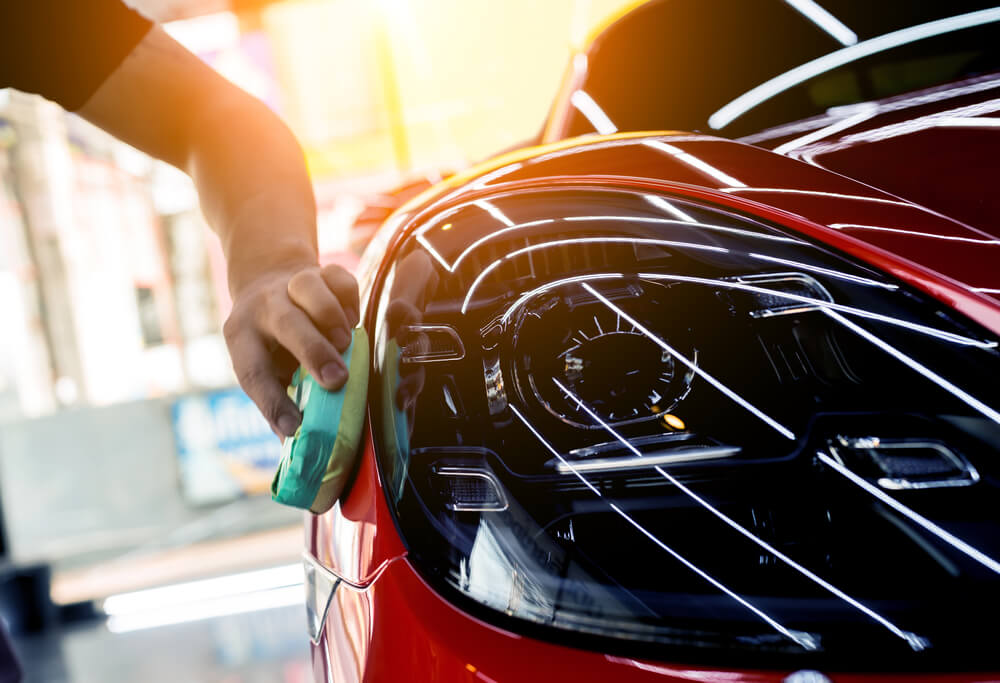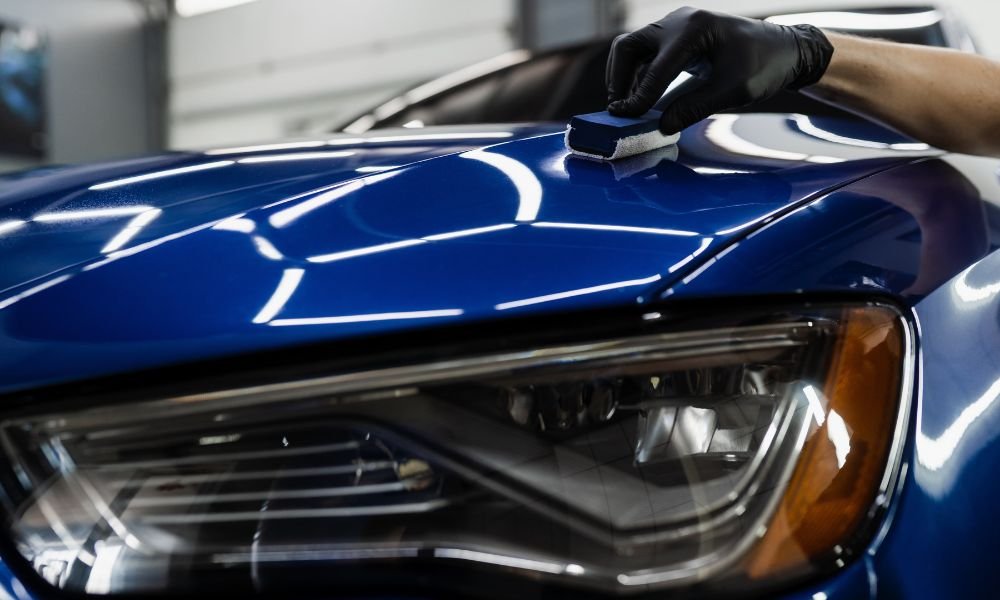Checking Out Various Types of Ceramic Coating for Different Lorry Finishes
Checking Out Various Types of Ceramic Coating for Different Lorry Finishes
Blog Article
The Value of Ceramic Coating: Securing Your Vehicle's Exterior With Precision
In a period where maintaining the aesthetic and functional integrity of your automobile is extremely important, ceramic finish arises as a crucial service. With its distinct bonding properties, ceramic layer offers a degree of security that much surpasses traditional waxing approaches.
Advantages of Ceramic Coating
When it comes to protecting a car's visual allure, ceramic layer uses substantial benefits. This advanced protective layer offers a sturdy shield against ecological impurities, including dirt, grime, and harmful UV rays. By creating a semi-permanent bond with the vehicle's paint, ceramic coverings properly avoid oxidation and fading, making certain that the vehicle keeps a shiny, showroom-like finish for an extensive period. This not only boosts the automobile's visual appeal yet additionally adds to its long-lasting worth.
Along with its safety high qualities, ceramic coating provides impressive hydrophobic residential or commercial properties, creating water and various other fluids to grain off easily. This function simplifies the cleaning procedure, as dust and particles are less likely to stick to the surface area, lowering the regularity and initiative required for maintenance. Moreover, the layer's resistance to chemical discolorations from acidic contaminants like bird droppings and tree sap is an additional significant advantage, reducing prospective paint damages.
Ceramic layers also enhance scratch resistance, offering a layer that can absorb minor abrasions and swirl marks. This characteristic is especially beneficial in keeping a beautiful surface area, lowering the likelihood of noticeable blemishes and maintaining the honesty of the car's paintwork in time.

Just How Ceramic Finishing Functions
Understanding the mechanics behind ceramic covering reveals its efficiency as a protective option for vehicles. Ceramic finishes are basically fluid polymer applications that chemically bond with a vehicle's manufacturing facility paint, creating a protective layer.
Application of ceramic covering involves a meticulous process. The car's surface area must be extensively cleansed and sanitized to guarantee optimum bond. When applied, the fluid polymer develops a semi-permanent bond with the paint, solidifying into a transparent, resilient shield. This guard improves the cars and truck's gloss and hydrophobic residential or commercial properties, assisting in much easier cleansing by creating water and impurities to grain and slide off effortlessly.
Additionally, the finish's molecular structure gives resistance to minor scrapes and chemical spots. Unlike waxes or sealants that sit on top of the paint, ceramic finishes integrate with the surface area, providing resilient protection. This combination is essential to its efficiency, ensuring the lorry's finish continues to be excellent for many years.
Comparing Ceramic Coating to Alternatives
In the world of auto security, ceramic finishing stands as a formidable choice when contrasted to conventional options such as sealers and waxes. While waxes supply a short-term shiny finish, normally lasting only a couple of weeks to months, ceramic coverings supply a longer-lasting option, usually withstanding for years. This longevity is attributed to the chemical bonding that occurs when ceramic coatings are used, forming a solid layer that is immune to environmental threats.
Contrastingly, sealers, although more durable than waxes, still disappoint the robust defense supplied by ceramic finishes. Sealers can normally last for approximately a year, giving a synthetic shield versus particular elements. They do not have the remarkable hydrophobic homes and UV defense that ceramic layers deliver.
In addition, ceramic layers offer enhanced scratch resistance, which neither waxes neither sealers can effectively match. In recap, while traditional waxes and sealers supply basic protection, ceramic finishings offer a comprehensive, long-term remedy that considerably enhances and preserves the vehicle's outside surface.
Application Process Discussed
Applying ceramic finish to a vehicle needs a precise process to make certain optimum results and durability. The initial step helpful site entails extensively cleaning the vehicle's surface to remove dirt, oil, and previous waxes. This is vital for making certain the coating sticks correctly. A pH-neutral hair shampoo and a clay bar treatment are often used to accomplish an immaculate surface area. As soon as cleaned up, the automobile is dried out and brightened to eliminate any flaws, as any existing scrapes or swirls can become more pronounced after the covering is used.
Following surface preparation, the application of the ceramic coating begins. The covering is usually applied in a climate-controlled setting to avoid dust bits from picking the newly cleansed surface. Utilizing an applicator pad, the ceramic finishing is used in small sections to make certain even coverage. It is necessary to comply with the manufacturer's standards relating to the proper treating time and application thickness. her explanation
After application, the layer needs a certain curing duration, during which the vehicle needs to be shielded from water and contaminants. This treating procedure can vary relying on the item however generally varies from 24 to 48 hours. Eventually, this detailed procedure is critical in attaining a glossy and resistant coating.
Maintenance Tips for Long Life
To preserve the durability of a ceramic layer, adherence to a self-displined maintenance regimen is important. Stay clear of automatic automobile cleans, as their rough brushes can jeopardize the finish's stability.
Post-wash, drying the car with a clean microfiber towel prevents water areas that may degrade the coating in time. Additionally, use a ceramic finish booster every few months. These boosters reinforce the hydrophobic properties and enhance the layer's protective capabilities, ensuring it stays effective versus contaminants.
Remember that car park places play an essential function in upkeep. ceramic coating. Whenever possible, park in shaded locations to reduce UV exposure, which can gradually compromise the finishing. For lasting storage, think about utilizing a cars and truck cover for included defense against environmental elements
Verdict
To conclude, ceramic layer functions as an essential safety layer for automobile outsides, supplying long-lasting protection against ecological factors such as dust, grime, and UV rays. By creating a semi-permanent bond with the paint, it enhances visual charm while protecting the cars and truck's value. Its hydrophobic residential or commercial properties help with easier useful content upkeep, identifying it from alternative protective methods. Recognizing the application procedure and sticking to upkeep referrals are crucial for maximizing the durability and effectiveness of ceramic covering.
When it comes to maintaining a vehicle's aesthetic appeal, ceramic finish uses substantial advantages. By forming a semi-permanent bond with the lorry's paint, ceramic layers effectively prevent oxidation and fading, making certain that the automobile preserves a shiny, showroom-like finish for an extended period. Ceramic finishes are basically fluid polymer applications that chemically bond with a car's factory paint, developing a protective layer. In recap, while traditional waxes and sealers use basic protection, ceramic layers offer an extensive, lasting solution that dramatically improves and preserves the vehicle's outside finish.

Report this page